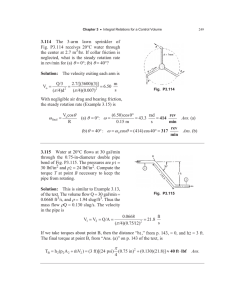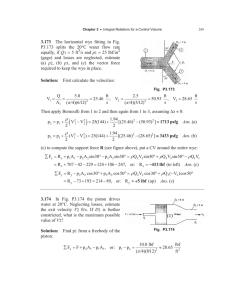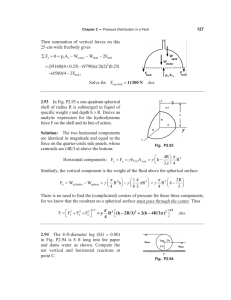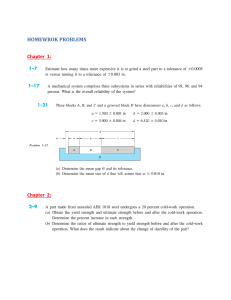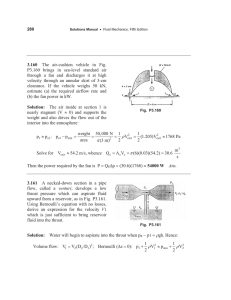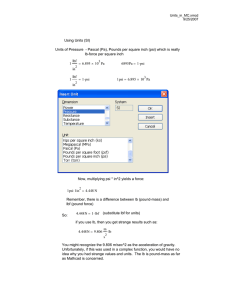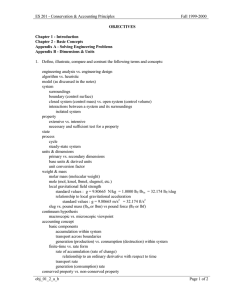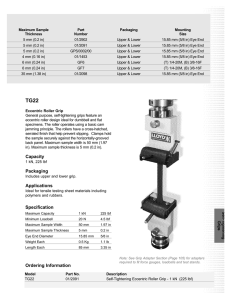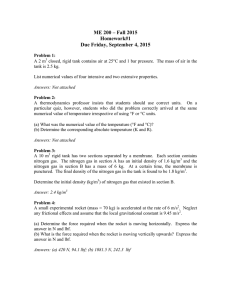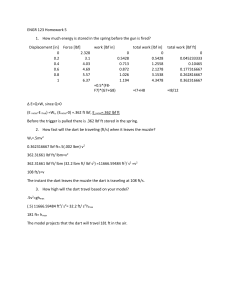P
advertisement
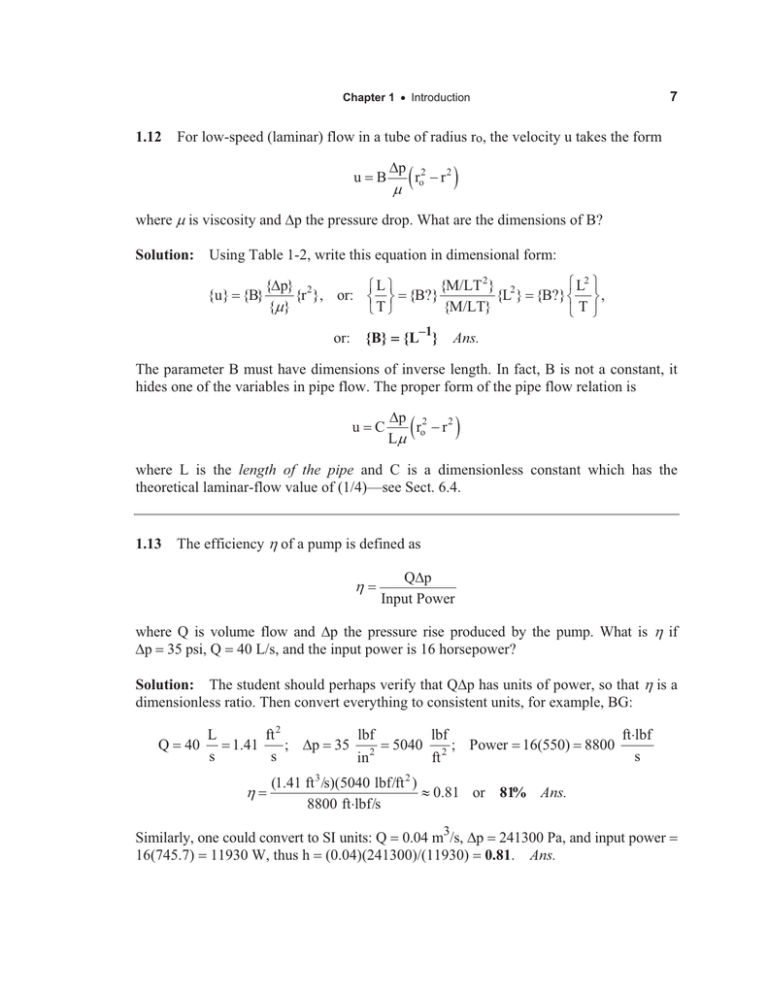
Chapter 1 x Introduction
1.12
7
For low-speed (laminar) flow in a tube of radius ro, the velocity u takes the form
u
B
'p
r
P
2
o
r2
where P is viscosity and 'p the pressure drop. What are the dimensions of B?
Solution: Using Table 1-2, write this equation in dimensional form:
{u} {B}
­ L2 ½
{'p} 2
{M/LT 2} 2
­L ½
{r }, or: ® ¾ {B?}
{L } {B?} ® ¾ ,
{P}
{M/LT}
¯T ¿
¯T¿
{B}
or:
{L–1}
Ans.
The parameter B must have dimensions of inverse length. In fact, B is not a constant, it
hides one of the variables in pipe flow. The proper form of the pipe flow relation is
u C
'p 2 2
ro r
LP
where L is the length of the pipe and C is a dimensionless constant which has the
theoretical laminar-flow value of (1/4)—see Sect. 6.4.
1.13 The efficiency K of a pump is defined as
K
Q'p
Input Power
where Q is volume flow and 'p the pressure rise produced by the pump. What is K if
'p 35 psi, Q 40 Ls, and the input power is 16 horsepower?
Solution: The student should perhaps verify that Q'p has units of power, so that K is a
dimensionless ratio. Then convert everything to consistent units, for example, BG:
Q
40
L
s
1.41
K
ft 2
lbf
; 'p 35 2
s
in
5040
lbf
ftlbf
; Power 16(550) 8800
2
s
ft
(1.41 ft 3 s)(5040 lbf ft 2 )
| 0.81 or 81% Ans.
8800 ftlbf s
Similarly, one could convert to SI units: Q 0.04 m3/s, 'p 241300 Pa, and input power
16(745.7) 11930 W, thus h (0.04)(241300)/(11930) 0.81. Ans.
